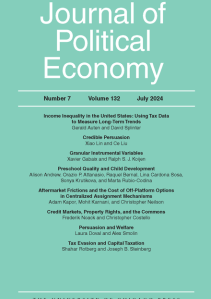<p>The relationship between the interest rate and the maturity of newly issued bonds provides information on the debt dynamics of an economy as well as on the sustainability of its debt. Such information is crucial especially for countries that have debt-rollover concerns due to financial stress and/or macroeconomic instability. This study investigates the relationship between treasury auction maturity, which also dictates the debt maturity, and auction interest rates. When the Turkish treasury auction data from 1988 to 2004 are analysed, a reciprocal linkage between auction interest rates and maturities can be observed, especially for the 1995-2000 period, when there were chronic high inflation, high political uncertainty, high public deficits and unsuc-cessful attempts at stabilisation. This suggests that under an adverse shock, the Treasury decreases the auction maturity in order not to in-crease interest rates too much. A change in this reciprocal relationship is also reported for the post-2001 era, which is characterised by decreasing inflation, higher political stability, lower public deficits and successful stabilisation attempts.</p>








